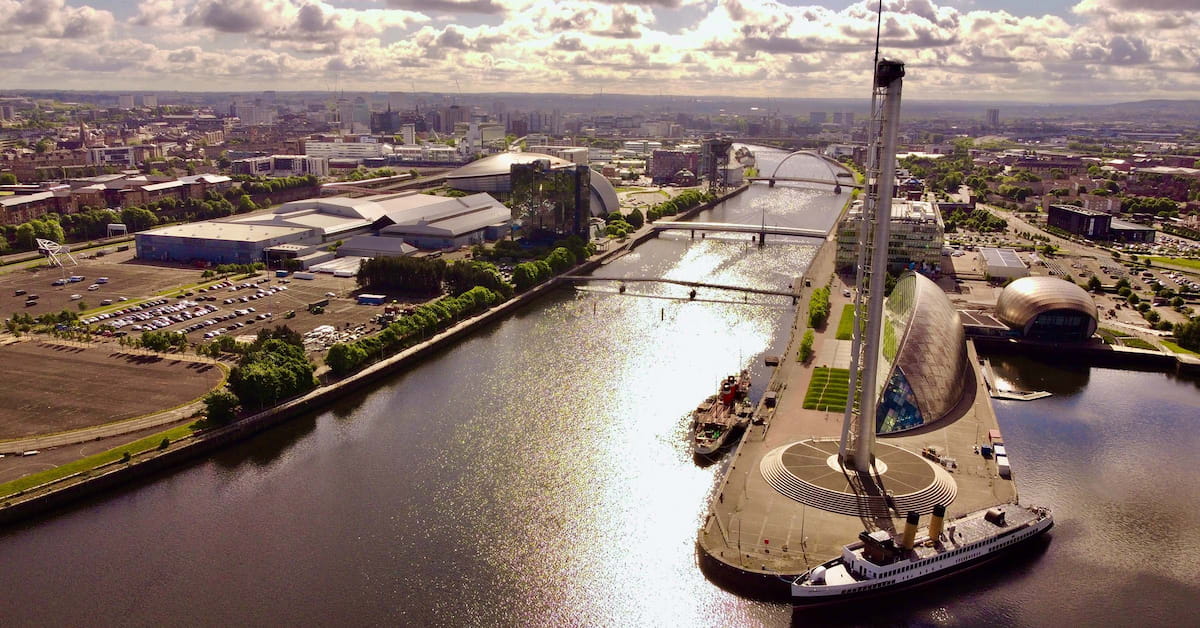Introduction

Tanya at COP 26
In a world constantly transforming to prepare for the future, it remains critical to slow down and properly address how the global climate crisis will affect generations to come. The 2020 World Population Data Sheet indicates that the world population is projected to increase to 9.9 billion by 2050, translating into nearly 10 billion people to feed, clothe, transport, employ and educate. While governments seem to be committed to a growth-driven world economy, we must also focus on action-driven solutions for global decarbonization.
In November, I had the pleasure of joining almost 40,0000 participants on the ground at the United Nations Framework Convention on Climate Change (UNFCCC), also known as COP 26 – the most well-attended COP in history.
While many of us followed popular COP trends, commitments, announcements and remarks through a multitude of media sources, being on the ground in Glasgow allowed me to capture a unique perspective on the work being done by numerous stakeholders to address the climate crisis.
COP26 resulted in agreements to reduce greenhouse gas emissions and a series of commitments to various mitigation and conservation efforts, including an anti-deforestation pledge, a methane abatement pledge, an agreement to end overseas financing of oil and gas projects, and a steel and aluminum trade agreement.
Substantial proclamations included:
- India providing the biggest fillip of the high-level segment when its prime minister, Narendra Modi, announced that the country would get 50% of its electricity from renewables by 2030 and get to net zero by 2070.
- More than 40 countries agreeing to phase out coal-fired power. Canada, South Korea, Ukraine, Indonesia and Vietnam said they would quit this dirtiest form of fossil fuels between 2030 and 2040.
- An alliance of more than 90 nations, covering two-thirds of the global economy, committing to reducing methane emissions by at least 30% from 2020 levels by the end of the decade.
I left cautiously optimistic that our society can implement the actions needed to aid in rebuilding a clean and healthy world with proper financing, transitioning away from fossil fuels to clean infrastructure and industries that create a variety of jobs, overcome significant inequalities and create a thriving economy.

My Week in Glasgow
Firstly, the United States made a strong and historic presence in Glasgow. As of February 2021, the United States officially rejoined the Paris Agreement, thirty days after President Biden assumed office. Through this, the United States clearly signaled to the world that climate change will be a top tier domestic and international priority, putting the climate crisis at the center of U.S. foreign policy and national security. Additionally, the U.S. and China reached an agreement to boost climate cooperation, calling for stepped up efforts to close the gap in achieving the 1.5C temperature goal.
Even with these significant achievements, coverage in the media continuously highlighted the lack of “progress” being made by governments and businesses in regard to the COP commitments. Although not highly noted, I saw a particularly proactive effort and substantial progress being forged by leadership on the ground and in our communities. I would be remiss if I didn’t acknowledge the inspiring work being done by young people, in particular, who are fiercely passionate about protecting the future of their communities while advocating and amplifying critical issues.

Tanya, left, at a Clean Air Task Force event during COP at Blair Estate.
I enjoyed in-depth conversations with grassroot leaders who notably used COP 26 as a platform to call attention to the concerns of those who are often overlooked by the media and influencers. Whether through peer education, strategic advocacy, research and development, or energy industry event engagement, it is incredible to see young people scaling up their efforts and using their skills to accelerate climate action.
I was also particularly impressed by the coverage and awareness surrounding ‘Transport Day’ built on the commitments and strategies introduced by the UK in its Net Zero Strategy, with a focus on how best to accelerate the transition to net zero emissions vehicles (ZEVs).
Shipping accounts for about 2.9% of global greenhouse gas emissions, and without mitigation, emissions could grow by as much as 130% from 2008 levels by 2050 and could cost the maritime industry around trillions to meet mandated climate goals over the next 30 years.
In line with these priorities, Bloom Energy recently announced the achievement of two key milestones on its path to decarbonize a centuries-old maritime industry. This included approval for our initial design for an engineless, fuel cell-powered liquefied natural gas (LNG) carrier and verification as an alternative power source for vessels as part of the American Bureau of Shipping’s (ABS) New Technology Qualification (NTQ) service.
And, of course, I can’t forget to mention the critical agreement that was reached. The Glasgow Climate Pact, combined with increased ambition and action from countries, means that 1.5C remains in sight and scales up action on dealing with climate impacts. However, it will only be delivered with concerted and immediate global efforts. COP 26 also saw a record finance raising effort for the Adaptation Fund of over $350m, around three times the previous highest level. Contributions to the Least Developed Country Fund reached $600m. From my observations, private capital will capture the bulk of funding needed to make proper investments in clean energy, but with the support from governments and policymakers in de-risking investment.
Clean Energy Priorities
The sheer number of individuals who gathered in Glasgow translates to a much anticipated, growing energy and effort towards identifying how we, as a global community, can achieve carbon reductions. Bloom Energy has positioned itself as a leader in the clean energy arena through implementation of resilient microgrids, production of hydrogen, government affairs advocacy for federal and state policy, and collaboration with industry leaders.
We are committed to providing clean, reliable energy that is upgradeable and future-proof to power a net-zero future. We are committed to be among the many businesses and communities to return to COP next year with streamlined strategies. Our topline goals include continued collaboration with current partners and policy makers to direct clean energy ambitions into actions, while supporting the transition to clean, affordable, equitable, secure, and resilient energy systems.
There was a sense of urgency coming out of COP 26 that we’re not there yet and have a challenging road ahead; however, there is increasing global momentum and the realization that governments alone cannot get the job done. As we look ahead in 2022, making progress will be a collaborative effort.



